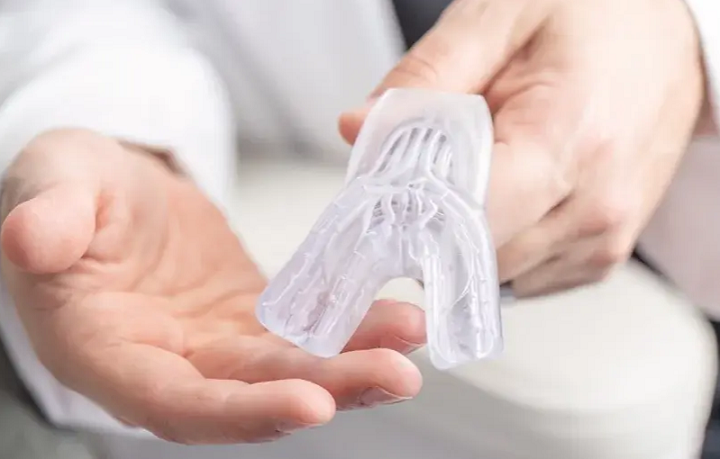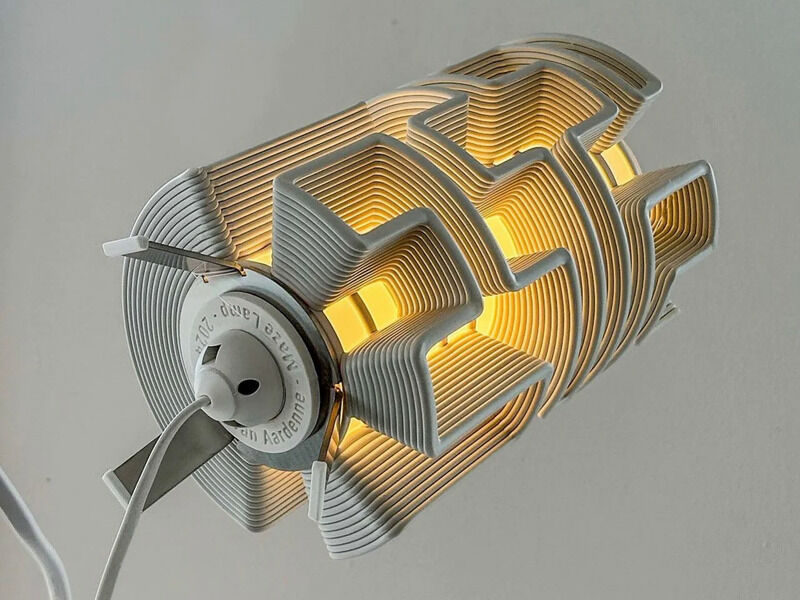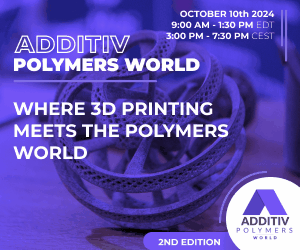We’re starting 3D Printing News Briefs today with seed funding news from a historic research program, and then moving on to technology awards. Then it’s on to a 3D printed titanium bicycle, before finishing with 3D printed consumer goods. Read on for all the details!
Queensland-Bavaria Collaborative Research Program Awards Seed Funding
In 2023, the Queensland-Bavaria Collaborative Research Program was formed under a Declaration of Intent between the Queensland Department of Environment, Science and Innovation and the Bavarian State Ministry of Science and the Arts. The idea is to help develop partnerships and research collaborations in the areas of artificial intelligence, cleantech, energy and storage, aerospace, quantum technologies, emission reduction technologies, biomedical research, health, life sciences, and additive manufacturing. $1,200,000 was committed to the program’s first year by the Queensland Government’s Miles Ministry and the Bavarian State Ministry of Science and the Arts. The first seed funding under this historic program will support ten innovative science projects in Queensland, including identifying exercises to treat osteoporosis, managing generative AI usage, finding better treatments for infections, and research to make batteries and fuel cells more efficient through the additive manufacturing of carbon materials.
“The Queensland-Bavaria Collaborative Research Program is an important component in our ongoing collaboration some of the world’s finest research institutions as we work towards sustainable solutions to the challenges faced around the globe,” said the Queensland Minister for Science and Innovation, Leanne Linard.
“We continue to move toward a zero-emissions, renewable energy, and a more diversified economic future, and it is crucial we enhance our scientific knowledge and capabilities in the essential areas that will drive this transition.
“One of my first official acts as Science Minister was signing the research agreement between the Queensland and Bavarian state governments to formalise our cooperation on world-leading research into greener fuels, energy storage, emission reduction technologies, and the broader bioeconomy.
“It is very pleasing to move into the next phase of this program – seeing real world projects coming to fruition.”
Mechnano’s Formula1B Wins 2024 Mexico Technology Award
The Mexico Technology Awards (MTA), held earlier this month, recognize the latest technological advancements and achievements in the electronics manufacturing sector. Arizona-based AM materials company Mechnano announced that it had received the MTA Award in the Additive Manufacturing category for its Formula1B photopolymer resin. This rigid, static-dissipative material is engineered using Mechnano’s proprietary process, which disperses functionalized carbon nanotubes (D’Func) throughout a material matrix to enhance the performance of 3D printed parts. Formula1B can create 3D printed parts with high ESD performance, in addition to improved mechanical properties like impact resistance and tensile strength. These features make the resin a great choice for many applications, including medical devices, automotive, aerospace, semiconductors, and consumer electronics.
“We are honored to receive the 2024 Mexico Technology Award for Formula1B. Our team is dedicated to pushing the limits of what the electronics manufacturing industry can achieve by using additive manufacturing,” said Olga “Dr. O” Ivanova, Director of Applications & Technology at Mechnano. “Formula1B offers nano-uniform ESD performance and precision for 3D-printed components, which are becoming increasingly important in the Semiconductor, Packaging, and Microelectronics sectors.”
No. 22 Showcased 3D Printed Titanium Aero Bike Prototype
At the recent MADE.bike Show in Portland, Oregon, titanium frame manufacturer No. 22 Bicycles revealed what they say is the world’s first 3D printed titanium aero bike. The Reactor, which has long been part of the company’s lineup, is its most performance-oriented road racing bike. The bike’s frame combines the “smooth ride properties” of a titanium tubeset with the efficiency of an ultra-stiff drivetrain. The new Reactor Aero prototype is said to likely offer the most efficient power transfer of a Ti frame, as well as a 30-40% drag reduction when compared to the No. 22 3D printed Aurora. The Reactor Aero features a frame 3D printed monolithically out of Grade 5 titanium powder, though just like the Aurora, the seat tube is carbon. The 3D printed prototype bike also has an aerodynamic profile, flat mount disc brakes, clearance for measured 34 mm road tires, an integrated carbon seat mast combined with a 3D sintered titanium seat mast topper, and more. No. 22 says the final version will be 3D printed in sections, which can be machined and welded in-house.
“3D printed titanium has phenomenal structural properties. The ability to print internal support structures anywhere in the frame gives us a level of control over the ride quality that has not been possible before,” said Bryce Gracey, Co-Founder of No. 22. “We are able to add stiffness in high load areas like the bottom bracket, dropouts, and head tube for very little weight, while playing with structure in fine detail throughout the frame to ensure it delivers the ride quality we need.”
3D Printed Proclaim Solution Customizes At-Home Oral Hygiene
If your dentist has ever told you that you’re not flossing enough, you’re not alone. Many people aren’t able to achieve the necessary levels of oral hygiene, get frustrated, and limit their dental appointments, and all because oral hygiene methods, like flossing and irrigators, are based on old technology. But technology like imaging and 3D printing is helping to customize these methods, so patients have an easier, more successful cleaning experience. A great example is the Custom-Jet Oral Health System by Proclaim – a novel product featuring a 3D printed, custom-fit, easy-to-use mouthpiece that enables preventative oral health at-home. Embedded inside the mouthpiece are up to 60 precision-placed water jets for fast interproximal cleaning. Once the system is activated, about 650 ml of water is pulsed through over the course of seven seconds, creating a “targeted cleaning stream directed simultaneously at the facial and lingual interproximal sites and gingival margins in the mandible and the maxilla.”
To create the custom-fit mouthpiece, intraoral scans are taken of a patient’s mouth biting down on a unique bite registration block. STL files are then uploaded through a secure, cloud-based portal, and proprietary software is used to craft the mouthpieces based on each patient’s unique oral anatomy. The mouthpiece is then 3D printed out of a medical-grade resin, and after post-processing and quality control, it is paired with the hydro station and shipped directly to the patient. All told, the process only takes a few weeks. A controlled clinical trial found that after 30 days, patients using the Proclaim system, rather than flossing, showed major improvement in the five study end points of plaque, pocket depth, bleeding on probing, gingival inflammation, and marginal gingival bleeding. The Proclaim system is said to be easy to use, and for multiple users in one home, the 3D printed custom mouthpiece can be inserted and removed from the control handle. It would also be good for people with reduced dexterity or mobility, but not for patients with an “unstable dentition,” like children or orthodontic treatment patients.
Unique Maze Lamps Created with Rotating Axis 3D Printer
Finally, Dutch designer Stijn van Aardenne, based in Rotterdam, used a rotating axis 3D printer to create his beautiful Maze lamps. Each lamp begins with a unique seamless pattern, and according to Trendhunter, the plastic material for the lamps is extruded and coils around the foundation’s spinning base. As the nozzle moves backward, forward, and sideways, it creates interesting patterns that stack on top of each to form a maze-like, 3D texture in a cylindrical shape. The patterns are randomly generated, so the design for each Maze lamp is completely different.The designer uses shredded plastic from discarded refrigerator doors to make the lamps, each of which stands approximately 27 cm tall, with a 16 cm diameter, and features a dimmable light source. The Maze lamp sits slightly elevated on three stainless steel legs, features a dimmable light source, and can be purchased for €250.
“The Maze lamps’ layers move freely in three-dimensional space, with each lamp having its own set of curves, making every piece unique,” van Aardenne wrote.
Subscribe to Our Email Newsletter
Stay up-to-date on all the latest news from the 3D printing industry and receive information and offers from third party vendors.
You May Also Like
Additive Manufacturing for Aerospace: Standards as a Path Forward
Amidst the backdrop of last week’s FAA/EASA workshop in Wichita, Bill Bihlman, Consultant and Volunteer to SAE, analyzes the state of AM aerospace standards. Commercial aviation is notoriously risk averse....
3D Printing Webinar and Event Roundup: September 22, 2024
There’s lots to choose from in this week’s 3D Printing Webinar and Event Roundup! Stratasys continues its North American tour, as well as its in-person training classes, and HP will...
Tesla Veteran Kevin Kassekert Takes the Helm as VulcanForms’ New CEO
In a major leadership shift, VulcanForms has appointed Kevin Kassekert as its new CEO and Jay Martin as President. This change comes at a crucial time as the company moves...
DEVCOM Sees SPEE3D 3D Print Transmission Mount for Bradley Fighting Vehicle
SPEE3D participated in a U.S. Army Combat Capabilities Development Command (DEVCOM) Army Research Laboratory (ARL) demonstration. The demo took place at the University of Tennessee Knoxville and ran from the...






































